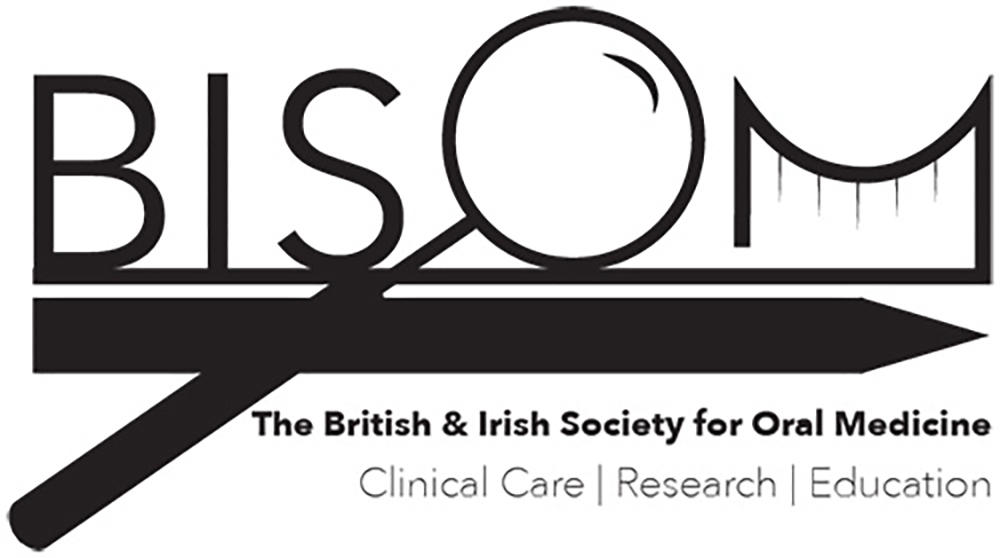
What are the aims of this leaflet?
This leaflet has been written to help you understand more about oral lichen planus. It tells you what it is, what causes it, what can be done about it and where you can find out more about it.
What is oral lichen planus?
Oral lichen planus is an inflammatory condition that affects the mouth. It can occur on its own or in combination with lichen planus affecting the skin elsewhere on the body, or the nail. Oral lichen planus affects 1 to 2% per cent of the population. It affects mainly adults, but more commonly women over 40 years old. Children are rarely affected.
What causes oral lichen planus?
In most cases, it is not known why oral lichen planus has occurred, but it is likely to be related to the body’s immune system. Oral lichen planus is not an infection and is not contagious. (This means that it cannot be passed from person to person). Some cases of oral lichen planus may be linked to chronic hepatitis C virus infection. This association is, however, uncommon in the UK.
Oral lichenoid patches are not oral lichen planus. They may occur in a few people. It can be very difficult to distinguish them from oral lichen planus. These can be caused by medicines, e.g. some drugs prescribed for high blood pressure and diabetes, or dental materials (mercury, nickel, gold, resins, acrylates).
Is oral lichen planus hereditary?
Although there may be a genetic basis, it is uncommon for more than one member of a family to be affected with oral lichen planus.
What are the symptoms of oral lichen planus?
The symptoms of oral lichen planus may include a burning or stinging discomfort in the mouth when eating or drinking. Spicy foods, citrus fruits and alcohol may trigger these sensations. If your gums are affected, they could become tender and tooth-brushing may be uncomfortable. Ulcers or erosions sometimes occur and these are especially painful. Some patients (about 15%) may also have lesions on the skin caused by lichen planus. Mild cases can be symptom-free.
What does oral lichen planus look like?
Typically, oral lichen planus appears as white, lace-like patterned patches on the tongue and inner surfaces of the cheeks. The area around the patches may also be bright red and swollen . However, it can appear as white and red patches or as areas of sores (ulceration) on the lining of the mouth. When the gums are affected by oral lichen planus, it is called “desquamative gingivitis”. The gums will look red and shiny.
How is oral lichen planus diagnosed?
The dentist or doctor may be able to make a diagnosis of oral lichen planus based solely on the appearance of the inside of the mouth. However, it is sometimes necessary to take a small sample (biopsy) from an affected area for examination under a microscope. A local anaesthetic injection to numb the biopsy area is necessary for this procedure.
Can oral lichen planus be cured?
In most cases oral lichen planus cannot be cured, but it may go away on its own. It tends to last longer than lichen planus that affects the skin on other parts of the body. It may persist for a number of years. However, there are treatments to manage and reduce the severity of symptoms.
In rare cases where the patches are thought to be caused by medicines or dental filling materials, changing these may result in an improvement or healing. These changes should only be undertaken with specialist advice and under medical supervision.
Is oral lichen planus serious?
In most people, oral lichen planus is not serious. However, an important, although uncommon, feature of oral lichen planus is a tendency to cancerous change, with about a 1% risk over a period of 10 years. In other words, one in a hundred people develop cancer in the mouth.
How can oral lichen planus be treated?
Mild cases of oral lichen planus may be symptom-free, and treatment is not required. For lichen planus that is causing discomfort, the following topical treatments can be used:
For the mouth:
- Anaesthetic (analgesic) mouthwashes are available and are particularly helpful if used before meals. Benzydamine is one of these.
- Topical steroids can be applied directly on the affected areas in the mouth. These help most patients. They are available as mouthwashes, sprays, pastes and small pellets (tablets) that dissolve in your mouth.
- If the gums are affected, it is important the teeth are kept as clean as possible by regular and effective tooth brushing. If not, a build-up of plaque) can make your gum condition worse. Your dentist/dental hygienist will be able to give oral hygiene advice and will arrange for your teeth to be cleaned to remove plaque/tartar as necessary.
- An antiseptic mouthwash or gel may be recommended to help control the plaque, particularly at times when the gums are sore. These can be daily hydrogen peroxide mouthwash or chlorhexidine twice per week. If possible, avoid a mouthwash containing alcohol.
Systemic treatment
In severe cases of oral lichen planus, systemic treatment (medicine taken by mouth) may be required for several months or years. A specialist will explain the risks and benefits of the different medication options available. Regular blood tests are required when taking systemic drugs to check for side effects, particularly during the early stages of treatment.
- Oral corticosteroids (steroids) may be prescribed for a few months. However, long-term treatment with corticosteroid tablets has possible side-effects, which your doctor will discuss with you.
- Other drug treatments that can reduce the immune system are introduced so that the dose of corticosteroid can be reduced as soon as possible. These include azathioprine, methotrexate and mycophenolate mofetil. These drug treatments are not corticosteroids and are considered to be safer for longer term use than higher does of steroid tablets. They are usually well tolerated, but do require careful monitoring and can be associated with a number of side-effects which should be discussed with a specialist. Regular blood tests are often required when taking these drugs, particularly during the early stages of treatment.
Self-care (What can I do?)
- Avoid spicy, acidic or salty foods if these make your mouth sore.
- Keep your teeth clean by using a soft brush and a small interdental brush to clean between the teeth.
- Choose a toothpaste with a mild flavour and free from the foaming agent sodium lauryl sulphate (SLS).
- In view of the small risk of cancerous change in oral lichen planus, it is important to ensure the mouth is checked on a regular basis by a dentist or oral specialist, so that any early changes can be spotted.
- It is advisable to stop smoking and reduce your alcohol intake to the recommended limits (currently 14 units a week for both men and women) as these are the main risk factors for mouth cancer. (See https://www.nhs.uk/oneyou for more information.)
Where can I get more information about oral lichen planus?
Patient support group:
Weblinks to detailed leaflets:
https://www.aad.org/public/diseases/rashes/lichen-planus
http://www.mayoclinic.org/diseases-conditions/oral-lichen-planus/home/ovc-20196706
http://www.emedicine.com/derm/TOPIC663.HTM
http://www.dermnetnz.org/scaly/oral-lichen-planus.html
Jargon Buster: https://www.skinhealthinfo.org.uk/support-resources/jargon-buster/
This leaflet has been produced in conjunction with the British and Irish Society for Oral Medicine (BISOM).

Please note that the BAD provides web links to additional resources to help people access a range of information about their treatment or skin condition. The views expressed in these external resources may not be shared by the BAD or its members. The BAD has no control of and does not endorse the content of external links.
This leaflet aims to provide accurate information about the subject and is a consensus of the views held by representatives of the British Association of Dermatologists and the British Society for Oral Medicine: individual patient circumstances may differ, which might alter both the advice and course of therapy given to you by your doctor.
This leaflet has been assessed for readability by the British Association of Dermatologists’ Patient Information Lay Review Panel
BRITISH ASSOCIATION OF DERMATOLOGISTS PATIENT INFORMATION LEAFLET
PRODUCED | FEBRUARY 2013
UPDATED | MAY 2016, SEPTEMBER 2019, MARCH 2023
NEXT REVIEW DATE | MARCH 2026
Download File